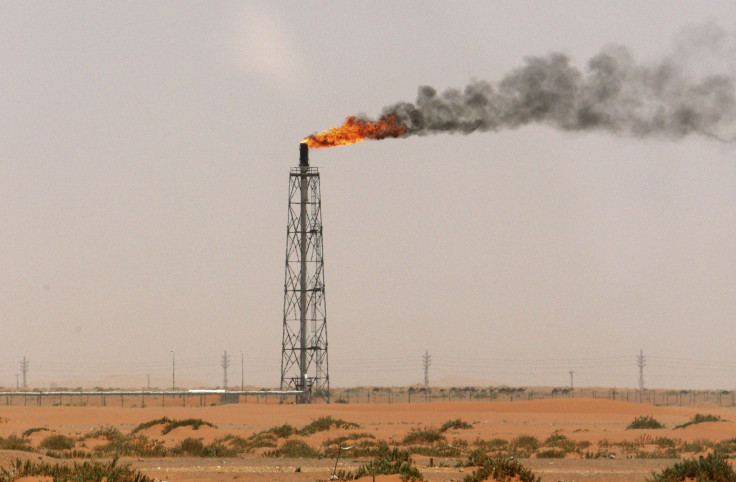Coronavirus Economy: Oil And Gas Companies May Lose $1 Trillion In Revenues This Year

KEY POINTS
- Oil firm revenues will plunge by 40% this year to $1.47 trillion
- These companies’ cash flow to plummet this year to $141 billion
- Exxon-Mobil will cut its global capital expenditures by 30% this year
Rystad Energy, an independent energy research firm based in Oslo, Norway, estimated that the devastating impact of the coronavirus pandemic will cut revenues of global oil and gas exploration and production companies by some $1 trillion this year.
Rystad Energy projects that total annual revenues for these companies, which includes all the major oil firms, will plunge by 40% this year to $1.47 trillion from last year’s figure of $2.47 trillion, then amount to $1.79 trillion in 2021.
Prior to the emergence of the pandemic Rystad Energy expected total revenues from these firms to amount to $2.35 trillion in 2020 and $2.52 trillion in 2021.
Rystad Energy further expects these companies’ cash flow to plummet this year to $141 billion, or about one-third of the figure from 2019.
Rystad Energy cautioned that its aforementioned forecasts are based on its base-case oil price scenario of $34 per barrel in 2020 and $44 per barrel in 2021 – meaning the final numbers could be far worse if current low prices persist into the future.
“This drop [in projected revenue and cash flow] not only undermines the companies’ solidity and reduces money available for investments and dividends, but also significantly cuts government tax revenue,” said Rystad Energy’s upstream analyst Olga Savenkova. “It will be challenging for petro-states such as Russia and many Middle Eastern countries to sustain their budgets.“
Savenkova added that, in the short term, sovereign wealth funds might intervene to shore up national budgets, thereby avoiding the need to enact sweeping cuts in spending.
In addition, Rystad Energy expected upstream spending to plunge by 25% to $410 billion this year from $530 billion in 2019. (The U.S. shale industry alone is expected to cut some 38% from their capital budgets in 2020).
For example, Exxon-Mobil (XOM) will cut its global capital expenditures by 30% this year. Exxon CEO Darren Woods said he expects oil demand to fall by between 25% and 30% in the near term. Chevron (CVX), BP (BP), Royal Dutch Shell (RDS-A) and Saudi Aramco have made plans to reduce capital spending by between 20% and 25%.
The reduction on capital expenditures, Rystad Energy explained, will have a dramatic impact on discoveries and on the ability of companies to proceed with final investment decisions on new projects.
Rystad Energy estimated that total sanctioned investments will drop to $110 billion this year, more than a 75% plunge from 2019.
Moreover, once a project is deferred due to low oil prices, it may take several years for it to be brought back online.
The energy industry is also losing its equity market strength – falling oil prices has been accompanies by tumbling stock process. The energy sector is now the second-smallest group in the S&P index, now accounting for only 3% of the index, down from 15% ten years ago and 30% in 1980.
The International Energy Agency projected a 6% plunge in energy demand this year, the biggest drop on record and seven times greater than the decline following the financial crisis of 2008.
“In absolute terms, the decline is unprecedented – the equivalent of losing the entire energy demand of India, the world’s third largest energy consumer,” the agency said in its Global Energy Report.
In the first quarter of 2020 alone, energy demand dropped by 3.8% year-over-year, thereby erasing all of 2019 ′ s demand growth.
IEA executive director Dr. Fatih Birol said: “This is a historic shock to the entire energy world. Amid today’s unparalleled health and economic crises, the plunge in demand for nearly all major fuels is staggering, especially for coal, oil and gas. It is still too early to determine the longer-term impacts, but the energy industry that emerges from this crisis will be significantly different from the one that came before.”
Electricity demand has also shrunk as so many factories and businesses shut down.
“Changes to how and when electricity is used during lockdowns have transformed the shape of electricity demand over the course of the day in some regions, with the pattern on weekdays now resembling the pattern usually seen only on Sundays,” IEA said.
For the full year, IEA expects electricity demand to drop 5% -- the biggest such decline since the Great Depression.
© Copyright IBTimes 2025. All rights reserved.





















